Physical Chemistry for JEE (Advanced): Part 1, 3rd edition [3 ed.] 9353503868, 9789353503864
3,464 824 332MB
English Pages [547] Year 2019
Recommend Papers
![Physical Chemistry for JEE (Advanced): Part 1, 3rd edition [3 ed.]
9353503868, 9789353503864](https://ebin.pub/img/200x200/physical-chemistry-for-jee-advanced-part-1-3rd-edition-3nbsped-9353503868-9789353503864.jpg)
- Author / Uploaded
- K. S. Verma
File loading please wait...
Citation preview
Contents
1.
1.1-1.94
Solid State
1.5
1.1
Introduction
1.2
General Characteristics of Solid State
1.5
1.3
Classification of Solids
1.5
1.3.1 Crystalline Solids
1.5
1.3.2 Amorphous Solids Classification of Crystalline Solids
1.5
1.4.1 1.4.2
1.6 1.7 1.8
1.16.3
Simple lonic Compounds of Type AB, (Fluorite Type) Simple lonic Compounds of Type 2A,B
(Antifluorite Type)
1.38 1.40 1.40
1.6
1.16.4 Relation Between Edge Length a and Radius of Cation and Anion in lonic Compounds 1.17 Structure of Diamond
1.41 42
Molecular Solids
1.6
1.18 Spinel Structures
142
Metallic Solids Covalent or Network Solids
1.6 1.7 1.10 1.11
Lattice Five Types of Two-Dimensional 1.7.1 Crystal Lattices and Unit Cells (3D) 1.8.1 Primitive and Centred Unit Cells
Lattices 1.12
1.8.2 Seven Crystal System Effective Number of Atoms (Z) in a Unit Cell
1.9 1.10 Atomic Radius and Shortest Distances in Cubic System 1.11 Coordination Number (CN) 1.12 Packing Fraction (PF) or Space Occupied by Atoms in a Cubic System
1.13 1.13 1.14
1.16 1.23 1.24
1.19.1 Structure of the Oxides of Iron
Unit Cell Dimensions 1.14 Close-packed Structures 1.14.1 Coordinate Number (CN) of hcp and ccp Structures 1.14.2 Relationship Between Formula of a Compound and Number of Voids Filled 1.14.3 Stacking Sequence 1.14.4 Location of Tetrahedral and
T.23
1.31 1.31 1.32
in Some lonic
1.38
Compounds
Unit Cell 1.23
1.38
1.42 1.42 1.43
1.43 1.45
1.45 46
Effect of Temperature and Pressure on a Crystal Structure
1.47
1.24.1 Weiss Indices
1.52 1.53
1.24.2 Miller Indices
1.53
1.24.3 d-Spacings
1.53 1.53
1.24 Hauy's Law of Rational Indices
Concept Application Exercise 1.1 1.25 Polymorphism and Allotropy
1.26 1.28
1.32 1.35 1.35
Compounds
1.20 Perovskite Structure 1.21 Rutile Structure 1.22 Calculation of Effective Atoms in an hcp
1.24.4 Interplanar Distances for Cubic System
1.13 Calculation ofthe Density of a Metal by Using
1.16 Structures of Simple lonic
1.18.2 Inverse Spinel Structures 1.19 Corundum Structure
1.8
X-ray Study of Crystals
Octahedral Voids 1.15 Structure of lonic Crystals 1.15.1 Radius Ratio Rules 1.15.2 Coordination Number
1.18.1 Normal Spinel Structures
1.7
1.4.3 1.4.4 lonic Solids Types of Symmetry in Crystals
1.5
1.16.2
1.1
Overview
14
1.16.1 Simple lonic Compounds of Type AB
1.25.1 Isomorphism and Isopolymorphism 1.26 Imperfections in Solids 1.26.1 Electronic Imperfections 1.26.2 Atomic or Point Defects 1.26.3 Line Defects or Dislocations 1.27 Electrical Properties of Solids
1.27.1 Conduction of Electricity in Metals
1.35 .56 1.57
1.57 1.58 1.58 1.61
1.62 1.62
1.27.2 Conduction of Electricity in
Semiconductors 1.27.3 Electron-Rich Impurities 1.27.4 Electron-Deficit Impurities
1.27.5 Applications of n-Type andp-1ype Semiconductors
1.63 1.63 1.63
1.63
vi
Properties of 1.28 Magnetic
Concept Application Exercise 2.3
1.63
Contents
Solids
1.64
Solved Examples Concept Application Exercise 2.4
1.64
Exercises
1.64
1.28.1 Paramagnetism 1.28.2 Diamagnetism 1.28.3 Ferromagnetism 1.28.4 Antiferromagnetism
Dielectric 1.29.1
Summarization
of Dielectric Properties
of Polar Crystals Concept Application Sohved Examples Exercises
Exercise 1.2
1.66 .75
Answers Key
1.89
31
1.90
3.2
Solid Solution Gaseous Solution
2.5
Overview
Introduction Types of Solution
2.2.1 2.2.2
2.5
2.3
2.2.3 Liquid Solution Methods of Expressing the Concentration of a Solution and "n*" Factor
2.5
2.4
Solubility of a Gas in a Liquid
2.5
2.4.1
Solubility of a Solid in a Liquid
2.6 2.8
Vapour Pressure of Liquid Solution
2.9
2.1
Raoult's Law 2.7.1 Raoult's Law as a Special Case of
2.9
Henry's Law
2.7.2
2.8
Measurement of Electrode Potential
3.11
Concept Application Exercise 2.1
2.21 2.21
Azeotropic Mixtures
2.10 Colligative Properties 2.10.1 Relative Lowering of Vapour Pressure 2.10.2 Elevation in Boiling Point
3.3.2
2.10.3 Depression in Freezing Point Concept Application Exercise 2.2
3.4
3.6
Method Electrochemical Series 3.6.1 Electropositive Chàracter
3.13 3.13 3.15
Nernst Equation 3.7.1 Effect of Concentration on EMF of
3.17
3.7
Cells and Half Cells
(for an Electrode Mn* | M) 3.7.2 3.7.3 3.7.4
3.8
3.18
EMF of Hydrogen Electrode in Different Concentrations of H* lons Equilibrium Constant from Nernst
3.18
Equation (Ee0.0 V)
3.18
Electrochemical Cell and Gibbs Energy
3.8.2
Electrolytic Solutions
3.19 3.19
Relation Between Standard Potential of Half Cells Containing a Metal in Different Oxidation State
3.
2.52
Electrochemical Reaction
Temperature
3.9
3.17
EMF of the Cell for a General
of the Reaction Variation of EMF (E) with 3.8.1
3.11
Electrolytic Solution
3.13
Measurement of EMF by Potentiometer
2.50
2.12.1 Calculation ofthe Extent of Dissociation or Association in an
3.12
Difference Between Potential Difference
3.5
Abnormal Molar Masses:
2.12 Van't Hoff Factor
3.12
Rules for Assigning Positive or Negative
and EMF
2.32
2.50 2.50
of
Sign to Electrode Potentials
2.23
2.24 2.28
Determination
Electrode Potential
of an Electrode
2.11
2.9
2.11
3.10
3.3.1
2.9
2.10
3.9 3.9 3.10
3.2.2 Galvanic Cell1 Standard Hydrogen Electrode (SHE) and
Raoult's Law for a Solution
Containing Volatile Components Ideal and Non-ideal Solutions
3.1
Introduction Electrochemical cell 3.2.1 Portable Daniell Cell
Henry's Law in the Form of Mole Fraction
2.5 2.6
3.3
2.1-2.92
2.1 2.4 2.4 2.4
3.1-3.114
Electrochemistry Overview
Solutions
2.2
Archives
1.85
Answers Key
2.1
2.89 2.89 2.92
1.66
3.
2.86
Numerical Value Type
Multiple Correct Answers Type
Archives
2.
1.65
1.91 92 1.94
2.83 2.88
1.75
Matrix Match Type Numerical Value Type
2.72
Matrix Match Type
Single Cornrect Answer T+ype
Linked Comprehension Type
2.72
Linked Comprehension Type
1.65
Properties of Solids
2.70
Multiple Correct Answers Type
1.64 1.29
2.62
Single Correct Answer Type
1.64
1.28.5 Ferrimagnetism
2.62
3.26
Concentration Cells
3.26
3.9.1 3.9.2
3.26 3.27 3.31
Electrolytic Concentration Cells Electrode Concentration Cells
Various Types of Half Cells Relation Between EMF, Solubility, and Solubility Product of a Sparingly Soluble Salt
Concept Application Exercise 3.1 3.12 Electrolysis 3.12.1 Qualitative Electrolysis
3.35 3.36 3.37 3.37
Contents
3.12.2 Quantitative Electrolysis: Faraday's Laws
4.
3.40
3.12.3 Calculation ofpH ofthe Solution After Electrolysis of Aqueous
Solution of a Compound Using 3.41
Inert Electrode
3.13 lonic Strength 3.14 Some Commercial Cells (Batteries) 3.14.1
Primary Cells
3.14.2 Secondary Cells 3.14.3 Fuel Cells 3.15
Corrosion
3.15.1 Mechanism or Theory of Corrosion 3.15.2 Factors which Promote Corrosion
3.15.3 Prevention of Corrosion Concept Application Exercise 3.2 3.16 Conductance of
Electrolytic
Solution
3.16.1 Factors Affecting Electrolytic Conductance
3.50 3.51 3.52 3.52 3.53 3.54 3.54 3.55 3.55
3.56 3.56 3.56
3.16.2 Factors Affecting Metallic or
Electronic Conductance 3.16.3 Resistance and Conductance
of Solutions
3.57
Chemical Kinetics
4.3
Concept Application Exercise 4.1
3.16.7 Ionic Conductance 3.16.8 Variation of Specific Conductivity,
Molecularity of Reaction Elementary and Complex Reactions
4.6
4.5.1 Types of Elementary Reactions Mechanism of a Reaction
4.6.1
3.57 3.58
4.8
ofIons 3.17.1 Applications of Kohlrausch Law
Integrated Rate Equation of Different 4.7.1
Zero Order Reactions
4.7.2 4.7 4.7.4
First Order Reactions
4.35
4.7.5
Fractional Order Reactions
4.35
4.7.6
Negative Order Reactions
4.35
Experimental
3.6
Abnormally High Conductivities of H®
and OH ions 3.18 Conductometric Titration
Concept Application Exercise 3.3 Solved Examples
Exercises Single Correct Answer Type Multiple Correct Answers Type 31 5
S6
7 7
Linked Comprehension Type Matrix Match Type
Numerical Value Type Archives
Answers Key
Detemination of Order
4.39
3.64 3.65
8.1 4.8.2
Initial Rate Method
4.8.3
Graphical Method
4.8.4
Half Life Method or Fractional
Use of Integrated Rate Equations
3.67
4.9
4.8.5 Ostwald Isolation Method Pseudo Molecular Reactions 4.9.1 Pseudo Unimolecular Reactions When O.R. = 1, but molecularity =2
3.61
4.9.2
4.39 4.39 4.44 4.48
Change Method
Base (SW) from Conductivity 3.17.4
Second Order Reactions
of Reaction
3.17.3 Determination of Hydrolysis Constant o f a Salt of Strong Acid and Weak Measurement
4.30 4.30 4.32 4.34
Third Order Reactions
3.17.2 Determination of lonic Product of Water from Conductance Measurement
4.23
4.29
Order Reactions
3.57
4.22
Applications of Mechanism of Reaction 4.24
Concept Application Exercise 4.2
Equivalent, and Molar Conductivities
with Concentration 3.17 Kohlrausch Law of Independent Migration
4.20 4.20 4.21
4.4 4.5
4.7
3.59 3.62
4.113 Factors Influencing the Rate of Reaction 4.14 Rate Expression and Rate Constant 4.14 Difference Between Rate of Reaction and Reaction Rate Constant 4.15 Order of Reaction 4.15
4.2.2 4.2.3 4.2.4
3.16.6 Measurement of the Conductivity of lonic Solutions
4.1 4.8 4.8
Formation/Decomposition in Mass Time
3.16.5 Equivalent Conductivity, Molar Conductivity, and Cell Constant
4.1-4.124
Overview 4.1 Introduction 4.2 Rate of a Chemical Reaction 4.2.1 Relation Between Different Rate of
3.16.4 Resistivity and Conductivity
of Solutions
vii
4.49 4.51 4.51
Pseudo Unimolecular Reaction, when O.R. = 1, but Molecularity of
3.68 3.68
4.9.3
3.69
3.71 3.85 3.85 3.1
4.51
Reaction=3 Pseudo Bimolecular Reactions when
Reactions having Molecularity 3 , but O.R. =2 4.9.4
Pseudo Bimolecular Reaction when O.R. 2 , but Molecularity >3 or 4
of Reaction
3.106
4.10 Typical First Order Gas Phase Reactions
3.107
4.11 Analysis of Some Important First Order
4.51
4.52 4.53
3.109
Reactions
4.56
3.110
4.11.1 Direct or Indirect Estimation of Reactants
4.56
3.113
4.11.2 Direct or Indirect Estimation of Products 4.56
vii
Contents
5.5.1
Classification of Colloids
5.19 5.19
5.5.2
Preparation of Colloidal Solutions
5.23
5.5.3
Purification of Colloidal Solutions
5.24
5.5.4
Properties
5.5.5
Coagulation or Precipitation
5.5.6
Protection of Colloids
4.63
5.5.7
Colloids Around Us
4.63
5.5.8
Applications of Colloids
5.5
4.11.3 Hydrolysis of Esters (CH,COOR) in Acidic Medium 4.11.4 Inversion of Cane Sugar Concept Application Exercise 4.3
4.56 4.57
4.12 Theories of Chemical Kinetics
4.61
(C222011
4.60
4.12.1 Temperature Dependence of the Rate
5.6.1
Types of Emulsions
4.12.6 Activated Complex
4.66
5.6.2
Identification of Emulsions
5.31
4.12.7 Exposure of Radiations
4.67
5.6.3
Properties of Emulsions
5.31
5.6.4 5.6.5
Application of Emulsions
5.31 5.31 5.31 5.32 5.36
and Frequency Factor (A)
4.12.3 Collision Theory
4.12.4 Efect of Catalyst
4.65
4.12.5 Thermodynamic and Kinetic Stability
4.66
4.12.8 Photosensitizer
4.67
4.12.9 Vision
4.67
4.12.10Quantum Yield or Quantum Efficiency of a Photochemical Reaction
Single Corect Answer Type Multiple Correct Answers Type
.108
Solved Examples Exercises
4.117
Numerical Value Tipe
4.119
5.1 5.3 5.3
Overview 5.1
Introduction
5.2
Adsorption Distinction Between Adsorption and Absorption
of Adsorption
5.2.2
Mechanism
5.2.3
Types of Adsorption
5.2.4
Factors Affecting Adsorption of Gases
5.2.5
on Solids
5.5
Adsorption from Solution Phase
5.8 5.8
Application of Adsorption Concept Application Exercise 5.1 Catalysis 5.3.1 Promoters and Poisons 5.3.2 Types of Catalysis 5.3.3 Theories of Catalysis 5.3.4 Important Features of Solid
(Heterogeneous Catalyst)
5.11
5.11 5.11 5.11
5.13
Catalysts
Shape-Selective Catalysis by Zeolites
Enzyme Catalysis 5.4.1 5.4.2 5.4.3
5.3 5.4
5.4
5.2.6
5.3.5
Multiple Correct Answers Type Linked Comprehension Tpe Matrix Match Type Numerical Value Type
Characteristics of Enzyme Catalysis Mechanism of Enzyme Catalysis
Catalysts in Industry
5.1
6.
5.36 5.39 5.40
Single Correct Answer Type
5.1-5.53
Surface Chemistry
Gels
Exercises
4.123
Answers Key
Harmful Effects of Emulsions
Lyotropic Series or Hofmeister Series Concept Application Exercise 5.2 Solved Examples Concept Application Exercise 5.3
120
Archives
Emulsions
5.7.1
4.113
Linked Comprehension Tipe Matrix Match Type
5.2.1
5.6
5.7
4.67 4.73 4.74 4.87 4.87
Concept Application Exercise 4.4
5.4
5.25 5.27 5.29 5.29 5.30 5.30 5.30
4.12.2 Calculation of Activation Energy
5.3
of Colloidal Solutions
or Flocculation of Colloids
4.61
of a Reaction
5.
Colloids
40 5.46 5.48 5.49 5.50
Archives
5.51
Answers Key
5.52
Nuclear Chemistry
6.1-6.64 6.1
Overview 6.1
Introduction
6.4
6.2 6.3
Discovery of Radioactivity Nature of Radioactive Radiations
6.4
6.4
Methods to Detect/Count Radioactive Radiations 6.5
6.5
6.5
6.4
Nuclear Structure and Nuclear Properties 6.6 Group Displacement Law Concept Application Evercise 6.1 6.7 Nuclear Stability and Neutron/Proton Ratio
6.11 6.12
6.8
6.13
6.9
Radioactive Decay Series Nuclear Binding Energy
Concept Application Exercise 6.2
Radioactive
6.10 Rate of Disintegration 6.10.1 Half-Life Period 6.10.2 Average Life 6.11 Radioactive Equilibrium
6.6
6.15
6.18 6.18 6.19
6.20 6.21
5.14
Concept Application Exercise 6.3
6.29
5.15
6.12 Artificial Transmutation 6.13 Nuclear Reaction
6.30
5.15 5.16 5.16
6.29
6.13.1 Types of Nuclear Reactions
6.30
6.14 Synthetic Elements Including Transuranics
6.31
Contents 6.15
Nuclear Fission 6.15.1
Chain Reaction
6.15.2 Application of
Nuclear
Fission
Concept Application
Exercise 6.4
Radioactivity 6.17 Applications of 6.5 Concept
Application
and
Erercise
Sohed Examples Exercises
Tipe Single Answers Type Multiple Correct Linked Comprehension Type Correct Answer
Matrix Match Tpe Numerical Value Type Archives
Answers Key
6.32
Solutions
S.1-S.124
6.32 6.33
Chapter 1 Chapter 2 Chapter 3
S.1 S.20
6.39
Chapter 4
S.73
6.40
Chapter 5 Chapter 6
S.104
.34
6.16 Nucilear Fusion
Radioisotopes
ix
6.43
S.36
S.111
6.44
6.48 6.48
6.58 6.60 6.61 6.62 6.63 6.63
Appendix 1: Some Useful Data and Log Tables
A.1-A.7
Appendix2:
Chapterwise Solved JEE Main 2019 A.9-A.15
Questions (16 Sets) Appendix3:
Chapterwise Solved JEE Questions (6 Sets)
Main
January 2020
Appendix 4: JEE Advanced 2019 Solved Questions
A.17-A.18
A.19

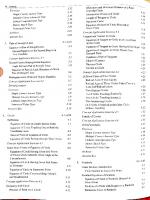
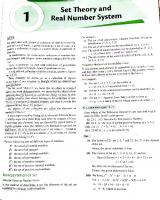
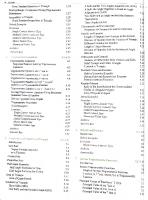
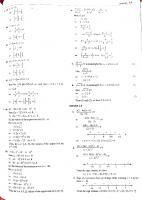
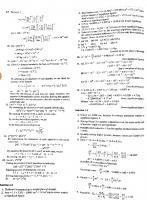
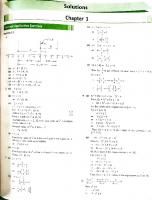
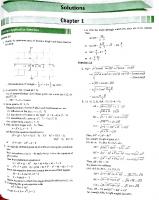

![A Textbook of Physical Chemistry for JEE Main and Advanced [2]
931214703X, 9789312147030](https://ebin.pub/img/200x200/a-textbook-of-physical-chemistry-for-jee-main-and-advanced-2-931214703x-9789312147030.jpg)